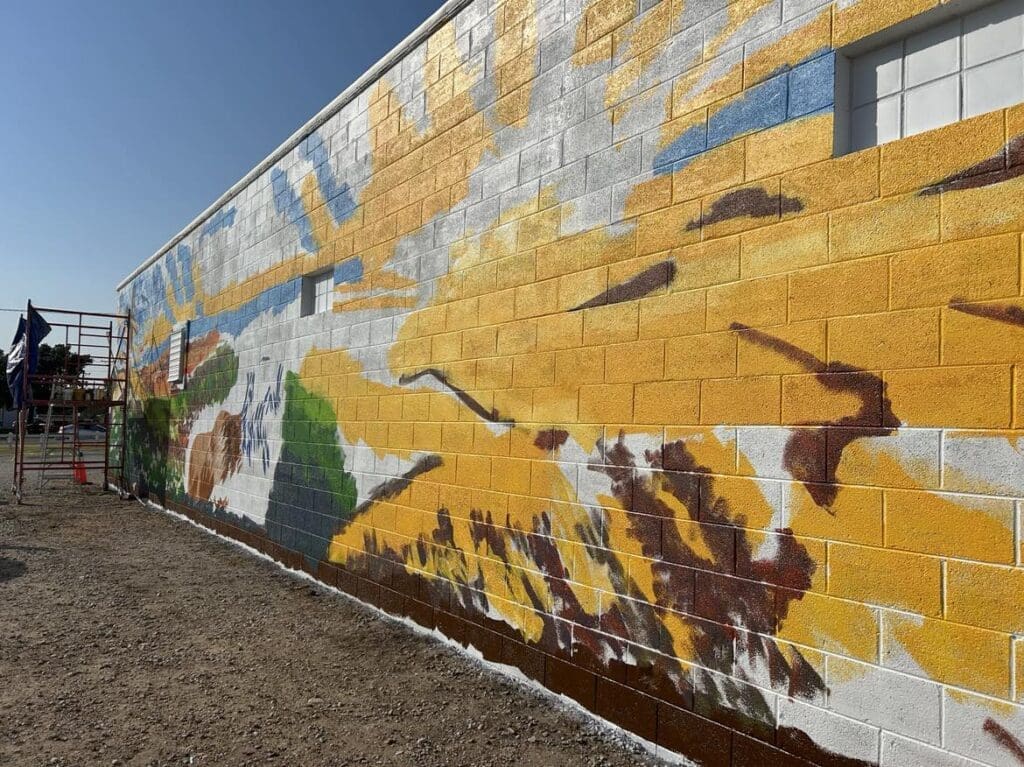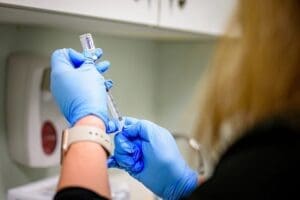By Rhys Baker
The latest work in the Mural Movement’s collection is being created by Clay County artist and retired USD 379 Art Educator Tracy Lebo of Wakefield. She has been creating murals since the 80s when she was in college at Kansas State University, painting backdrops at McCain Auditorium for various productions. This is Lebo’s third painted work with the Mural Movement. However, she has been involved in other ways. “As an art educator in Clay Center for 35 years, it’s really neat to see people in town just step up, like the zoo, the hospital, and the swimming pool. Once we got one mural going, which was kinda cool, that first one that said ‘Clay Center, ’ my kids got to help design that and put the bronze tiger sculpture within the letters of the design.”
Lebo’s current work is themed “How Great Thou Art,” which was requested by the donor via Clay County Arts Council and The Mural Movement. The location of the work, at the Clay Center Elks Lodge, has had some unique challenges as Lebo has researched, gathered images, measures, and adjusted the project along the way. She is excited that the murals are putting Clay Center on the map. “When I painted the other murals, people from California and Texas stopped by, and we’ve had painters from all over the place as well. One couple stopped by and said, ‘We would not be here today if it wasn’t for the mural movement. We came here just to check out your murals. That’s why we were here. Then they said they had heard about different places in town to eat. They talked about that and then quizzed me on how I do things. That’s happened again and again as I paint.”
Lebo has been involved with the creation of many other artworks around Clay Center, including a mural in the Clay County Courthouse, creating murals at Clay Center Community High School with her students, the bronze tiger sculpture at C-C-C-H-S and numerous paintings sold to benefit her alma mater, Kansas State University.













